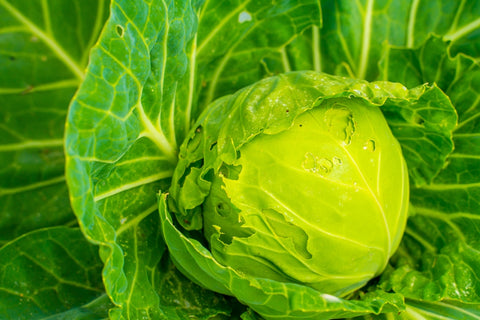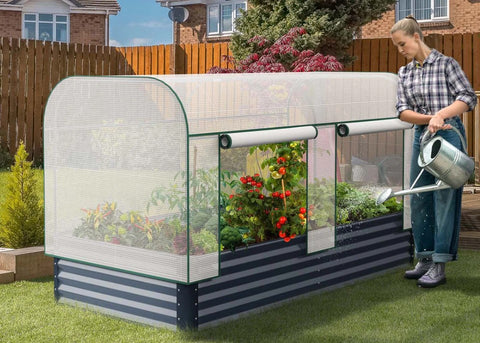As the air becomes crisper and the landscape rises to meet the sky, gardening enthusiasts find themselves facing a unique set of challenges and opportunities in the world of high-altitude gardening. This blog aims to explore the captivating realm of cultivating gardens at elevated heights, deciphering the nuances that come with this lofty endeavor. From the defining characteristics of high-altitude gardening to valuable tips for success, let's ascend into the heart of the mountains and uncover the secrets of nurturing thriving gardens amidst the peaks.The following content also has some reference value for raised garden beds.
Elevating the Garden: A Unique Introduction to High-Altitude Gardening
As the ground climbs and the oxygen thins, so does the art of gardening take on a whole new dimension. High-altitude gardening, often perched in mountainous landscapes, presents both challenges and opportunities that test the mettle of even the greenest thumbs. In this exploration of elevated harvests, we unravel the mysteries of gardening at heights where the air is pure, the views are breathtaking, and the soil tells a story of resilience. Join us on this ascent into the world of high-altitude gardening, where the journey is as thrilling as the destination.

Defining High-Altitude Gardening
- Altitude Thresholds: High-altitude gardening typically refers to cultivating plants at elevations of 5,000 feet (1,500 meters) or higher. The challenges stem from factors like reduced air pressure, temperature fluctuations, and shorter growing seasons.
- Mountain Microclimates: Mountainous regions often host diverse microclimates, presenting opportunities for creative gardening as different areas within the same altitude range may experience distinct weather patterns.
Challenges of High-Altitude Gardening
- Reduced Oxygen Levels: Plants at higher altitudes face lower oxygen levels, affecting their respiration and metabolism. Understanding the impact on plant growth is crucial for successful cultivation.
- Temperature Extremes: High-altitude locations are prone to temperature extremes, with chilly nights and intense sunlight during the day. Choosing resilient plant varieties that can withstand these fluctuations is key.
- Short Growing Seasons: The growing season is compressed at higher elevations due to colder temperatures. Gardeners must optimize planting times and select varieties with shorter maturation periods.
- Thinner Soils: Mountain soils may be thinner and less nutrient-dense. Supplementing with organic matter and adopting soil conservation practices becomes essential.
Opportunities Amidst the Peaks
- Pure Air Advantage: High-altitude gardens often benefit from clean, pure air, providing optimal conditions for plant respiration and photosynthesis.
- Vibrant Views: The breathtaking mountain views surrounding high-altitude gardens create an inspiring backdrop for gardening The aesthetic appeal of these landscapes can be leveraged in garden design.
Tips for Successful High-Altitude Gardening
- Choose Cold-Hardy Varieties: Opt for plant varieties specifically bred for cold climates. Cold-hardy vegetables, flowers, and herbs are more likely to thrive in the challenging conditions of high altitudes.
- Strategic Planting Times: Understand the unique growing season of your high-altitude location. Start seeds indoors to extend the growing period and select plants that can withstand cooler temperatures.
- Soil Enrichment: Enhance the fertility of mountain soils by incorporating organic matter such as compost or well-rotted manure. Mulching helps retain moisture and protect the soil from temperature extremes.
- Windbreaks and Microclimates: Use windbreaks, such as fences or strategically planted trees, to shield the garden from harsh winds. Create microclimates by planting heat-absorbing materials like rocks to increase temperature in specific areas.

Embracing Alpine Flora and Fauna
- Native Plant Wisdom: Explore the native flora of high-altitude regions and incorporate indigenous plants into your garden. Native species are adapted to the local environment and can thrive with minimal intervention.
- Attracting Local Wildlife: High-altitude gardens often coexist with diverse wildlife. Design your garden to attract beneficial pollinators and discourage potential pests, fostering a balanced ecosystem.
Container Gardening at Heights
- Portable Possibilities: Container gardening is a versatile solution for high-altitude gardens. Portable containers can be moved to optimize sunlight exposure and shielded during extreme weather.
- Soil Control: Containers allow for precise control over soil composition, addressing the challenge of thin or less fertile mountain soils. Choose well-draining mixes and tailor soil conditions to plant preferences.
Garden Design with Altitude in Mind
- Terraced Beauty: Utilize the natural slope of mountainous terrain to create terraced gardens. This not only maximizes space but also allows for effective water drainage and sunlight exposure.
- Vertical Gardening: Embrace vertical gardening techniques to make the most of limited space. Wall-mounted planters and trellises can add layers of greenery to your high-altitude oasis.
Celebrating Seasonal Peaks: Special Events and Harvests
- Festivals of Blooms: Highlight the unique seasonal blooms and events in high-altitude gardens. Celebrate the resilience of plants that bloom in challenging conditions, turning each season into a festivity.
- Harvest Celebrations: Organize harvest gatherings to share the bounty of your high-altitude garden with the community. Celebrate the fruits of your labor amidst the majestic peaks.
Building a High-Altitude Gardening Community
- Online Platforms: Join online gardening communities or forums specific to high-altitude gardening. Share experiences, exchange tips, and connect with fellow enthusiasts facing similar challenges.
- Local Workshops: Organize or attend local workshops and events focused on high-altitude gardening. Learning from seasoned gardeners in your community can provide valuable insights and practical advice.

Conclusion: Reaching New Heights in Gardening
High-altitude gardening invites adventurers and cultivators alike to ascend into a world where challenges are met with creativity, and opportunities bloom amidst the peaks. As you embark on this elevated journey, consider the resilient spirit of the plants that thrive in mountainous landscapes and the sense of accomplishment that comes with nurturing life at new heights. In high-altitude gardens, every bloom is a testament to the gardener's tenacity and nature's enduring beauty. So, with soil-stained hands and a heart tuned to the rhythm of the mountains, embrace the challenges, seize the opportunities, and let your garden reach new heights.









